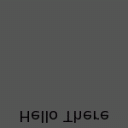
Ok, so I would like to ask someone who understands wiring (and possibly the programming behind it) to explain how exactly everything is calculated. All the theories I have about how it works don't seem to be supported by the data on the wiki.
Things such as:
-What does the req'd energy per cycle mean?
-What does it mean when a machine has a certain "storage".
-What does the minimum eu/s mean and what happens if it gets more.
-What happens to energy that isn't used, (sent from MFE's) or energy that is lost in unequal splits.
-When and how exactly do machines use the energy given to them.
Also, with the HV transmitters, I assume that there is a certain input level required to keep the output going strong, as the output HV stores up the 2k it gets and slowly releases it, meaning to keep a solid 50eu coming out, there must be a minimum number of energy bursts sent per period of time.
How is my MFE charging when it has an input of 5, and output of 6, and goes to 2 machines that combined require a minimum of 5 eu/s to run continually, and also, why does each machine seem to take energy from the MFE in large bunches, rather than over time and storing it up?
Thanks to anyone who can help here.
Things such as:
-What does the req'd energy per cycle mean?
Total EU's needed to run a single cycle.
-What does it mean when a machine has a certain "storage".
How much energy the machine needs to run a cycle is "stored" in the machine. (Also why it takes batches, not constant flow) This storage charges up to max, then the machine runs a cycle if there's a reason to run said cycle (like iron dust in a furnace.)
-What does the minimum eu/s mean and what happens if it gets more.
Minimum eu/s is the minimum required power supply (consistent) that is needed for a machine to continue running non-stop. The consequences for more power are one of two things, depending on config file setup: 1): if config setting for "eat all power" (forgot the exact words) is off, the excess amount is returned to the MFE. if it is on, you lose all the power the MFE sends out to power the machine, even the unused portion.
-What happens to energy that isn't used, (sent from MFE's) or energy that is lost in unequal splits.
energy not used is covered in last question  energy lost in unequal splits is just that: lost. it's usually 1EU/s, which in my opinion isn't much.
energy lost in unequal splits is just that: lost. it's usually 1EU/s, which in my opinion isn't much.
-When and how exactly do machines use the energy given to them.
machines acquire energy to fill their storages for runnign 1 cycle. They use that power when there's something to cycle. Mostly, this question has been covered in the above sections.
With an HV transmitter, if you want a constant outflow of 2k EU/s (which is just ridiculous!), you'd have to create the largest power farm to date. It can be done, but it takes time and concentration. An HVT is designed to move power across vast distances, from one to another (or to a tesla ^^). HV's are not designed to constantly run, but rather take in power until it reaches XXXX amount and sends it across the HV line to the destination, where its counterpart then filters it down to 50 EU/s bunches that doesn't cause MFE's or generators to explode. (P.S. Minimum is 50 EU/frame, the s is actually very misleading, as Alblaka has mentioned in the main thread in the minecraft forums.)
Your charging MFE is charing because the two machines are fully powered, and are not requesting more power at the time of the charing. Now, they'll run a cycle, have 0 EU and request more, thus the batch send, but when they don't need to charge themselves, they'll leave the MFE alone to collect more power. 
I hope that A): made sense and B): answered your question.  If not, let me know. "George of Jungle, always here to heeeeeEEEEELP!"
If not, let me know. "George of Jungle, always here to heeeeeEEEEELP!"

